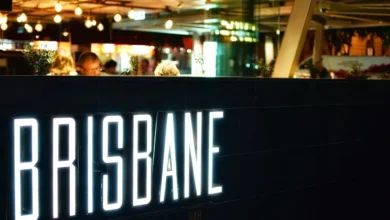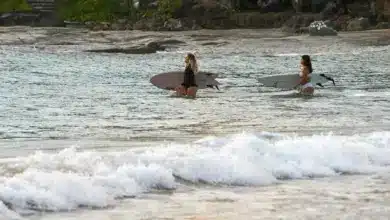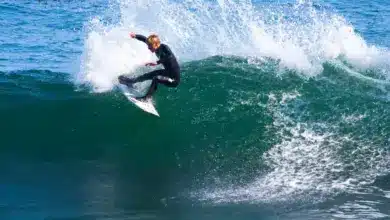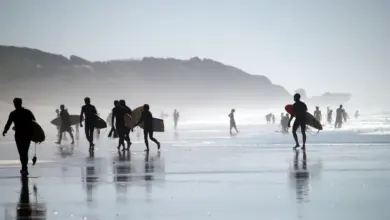Best Surf Locations In Victoria
Top 10 Victorian Surfer Beaches
The Rip Curl pro attracts the biggest names in the sport to Australia’s surfing home, Bells Beach. This professional surfing competition has been held every year for 59 years. It is usually held over Easter. This event inspires surfers to get out on the water. Here are the best spots within two hours of Melbourne.
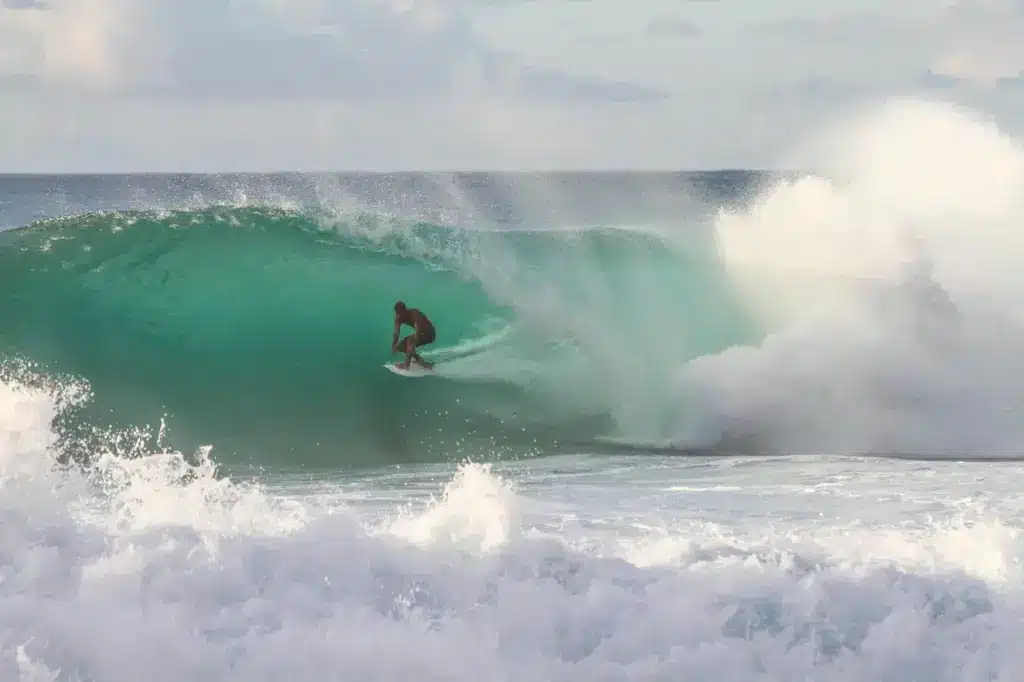
GREAT OCEAN ROAD
Bells Beach
A must-visit place for serious surfers. Bells Beach is known for its swells, and the natural amphitheatre where red clay cliffs plunge into the Great Southern Ocean. The exposed reef and the point break offer excellent right-hand breaks. They are best in autumn and winter. Bells is only a short distance from Torquay, and 80 minutes from Melbourne.
One of the oldest and longest running events in professional history (only COVID managed to cause a holding pattern for the last two years). The oldest and longest-running event in professional history. Only COVID caused a holdup for the past two years.
There are heated debates about which wave is the best, but personally I prefer Winki below 8ft and Bells above 8ft on the rare occasions that I am brave enough to paddle out. Funny enough, for two waves that are so close together, the conditions can vary.
Winki is 3-5ft South with a little west swell. Low tide will be coming in, and there’ll be a light NNW breeze. You will be met with some of your longest peeling rights, ones which will give you leg cramps and ones which will allow you to rip a half dozen whips from the top.
Bells is a 6ft SSW plus swell with an outgoing tide down to low, and a NNW direction wind (the softer, the better). In these conditions, Bells is a fun wave to ride. You can cruise along the big walls while taking in the scenery. You will find that other waves, particularly if there is a double-up on the bowl, are just waiting for you to take them.
Fairhaven
Fairhaven Beach is six kilometres long and 90 minutes away from Melbourne. It’s the longest beach along the Great Ocean Road. The beach is set against the Otway Ranges and the southern aspect makes it vulnerable to 1.5 metre waves. Fairhaven Surf Life Saving Club is located at the eastern end. The beach is patrolled. The shifting sand will cause rips, currents and waves. Swimmers and surfers need to be aware of these.
This is the last stop on your journey down to the Surf Coast, where you will find more challenging waves that I won’t list. It’s up to you if you want to find them. Go explore!
Fairhaven Beach, which is six kilometres long, is easily accessible as the Great Ocean Road runs along the beach. The beach runs west for 4 km from the mouth Moggs Creek, before curving slowly to the east at Western Cinema Point.
Fairhaven beach is where you can find the Instagram-worthy ‘Great Ocean Road” sign. Take a picture and show your audience that you have surfed the Great Ocean Road. But more importantly, enjoy the drive if you made it to this point.
It’s best to surf when the waves are shorey. I may be wrong, but I’ve never seen waves in Fairhaven that were over 3 feet and weren’t shorey. Some waves in the corner can handle swells better but, overall, you should surf somewhere else if there is a strong swell.
BELLARINE PENINSULA
Thirteenth Beach
Thirteenth Beach is one of the most popular destinations for foodies, surfers, and golfers who know where to go. It’s located on a 7-kilometre stretch of coastline between Barwon Heads, and Black Rock. Geelong is home to one of the closest surf beaches, and this beach has a low to moderate swell that provides numerous beach breaks.
13th Beach is a part of the 7km stretch of coastline between Barwon Heads, and Black Rock. It can be one of the best waves on the Surf Coast. With its challenging conditions and proper standing-up barrels, you will either feel blown away or humbled.
You’ll find that the beach is long and offers a wide variety of conditions. There’s something for everyone. The main peak, Beacon, is where you’ll want to start pumping. Beacon has short, super-punchy rights and lefts with a little more length but still punchy.
If you want to paddle back out, make sure that your cardio fitness is up to par before setting out.
Raffs Beach
Raffs Beach is 90 minutes away from Melbourne, on the Bellarine Peninsula. It extends from Ocean Grove to the mouth the Barwon River. The size of the beach breaks diminishes all the way up to the mouth of the Barwon River. Best conditions are moderate swells and westerly to north-west winds.
GIPPSLAND
Cape Woolamai
Cape Woolamai is the highest point of Phillip Island and one of Victoria’s most popular surfing beaches. The region, located an hour and forty-five minutes away from Melbourne, was recently designated a National Surfing Reserve to recognize its rich surfing history and natural environment. Cape Woolamai can be a dangerous beach because it is an Open Ocean. Only swim when Life Saving Flags appear.
Woolamai Beach is my favorite place to surf. This stretch of sand is always exciting to surf because of the rip bowls and banks, as well as the rawness of the sand and the untouched nature of the beach.
It’s about 1.5 hours away from Melbourne. You can do the morning surf here and then head back up to URBN SURF for the afternoon surf on a weekend. Win!
I don’t think it’s as rough as Gunnamatta, but this depends on the surfer. Woolamai is a place that can change from a rough closeout to an incredibly groomed peak within a few hours depending on the tide and swell. You need to keep checking it regularly to make sure you get the most out of it.
Waves are usually peaks, left and right, rip-bowls (be careful!) If it’s larger, you may get a “2 for 1” where you can nail something on the outside and then finish the wave on the shore. Everyone gets solid WQS scores!
Smiths Beach
Phillip Island is located in less than two-hours from Melbourne and is part of the National Surfing reserve. It’s also a beginner-friendly option. Surf schools love the waves because of their flat bottom and consistency. Islantis surf experience is a great place to learn more about Australian surfing culture while on Phillip Island.
Smith’s, if we are being honest, isn’t the most popular wave in this area. Sure, it’s good for surfing lessons or competitions when everything else is too big or blown out. You’ll go to the other beach if you find a tube-shaped wave that you can ride.
The Smiths is a great wave to ride on a log, twin or even if you are just learning. You can surf, play with your kids and get there easily. To get the best out of this beach, you’ll want to go at mid-tide with a north wind. Oh, and be cautious of rocks. While it is a safe beach, some rocks are hidden.
Smith Beach on Philip Island has a point break and a beach that is fairly exposed. The surf here is inconsistent, with no seasonal patterns. The north wind is the best. Surfers tend to get distant groundswells and the best swell direction comes from the south. There are lefts and right at the beach, and there is also a point break on the left. The best ar
The Oaks
Cape Paterson is a seaside town in Gippsland located two hours south of Melbourne. It has one of the few beaches that have a sandy section for surfing. A 250-metre-wide opening in the rocks hides a hidden beach and surf spot.
Kilcunda
Kilcunda Beach is 90 minutes away from Melbourne, along the Bass Coast. The town’s popular surf beach can be found past the eastern headland on the main beach. It is popular with surfers and anglers. The rocky cliffs are replaced by large sand-dunes and vast stretches of sand. Kilkunda Beach is a dangerous Open Ocean Beach. Only confident swimmers and surfers are advised to swim and surf.
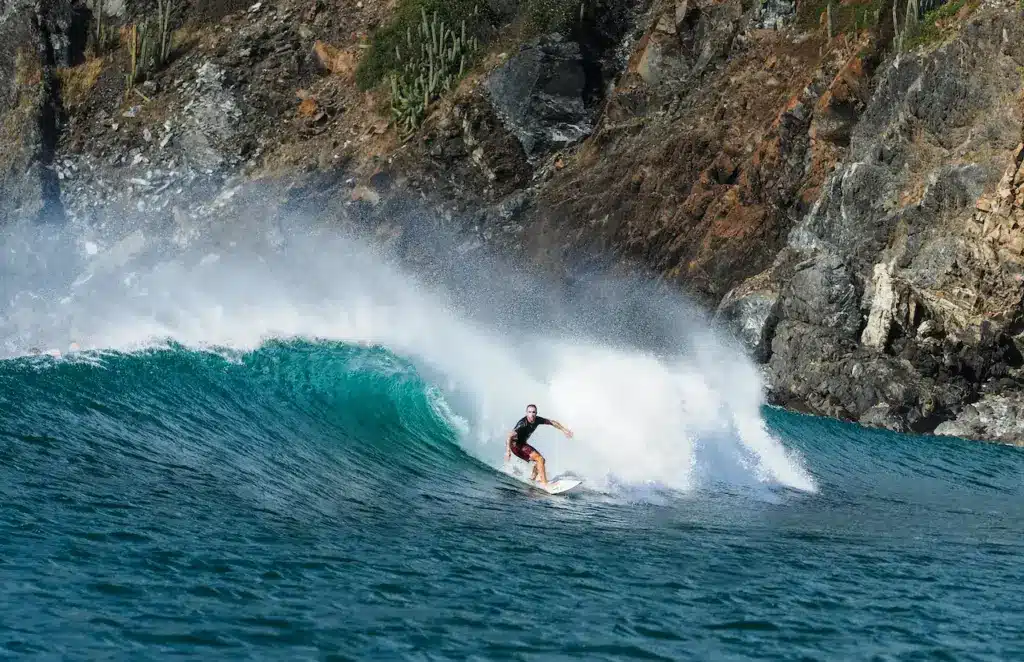
MORNINGTON PENINSULA
Gunnamatta Beach
The Mornington Peninsula has some of the best surf beaches in Australia. Gunnamatta is the best surf beach in the Mornington Peninsula National Park. It’s located on the 30 km long rocky and sandy coast, which extends from Cape Schanck up to Point Nepean. The high swells and reefs guarantee consistency. It is located 80 minutes away from Melbourne. Gunnamatta Beach is an Open Ocean Beach and can be dangerous due to strong rips and big waves. Only advanced surfers and swimming are advised to swim and surf.
You can surf for the day, and then visit wineries or natural hot springs (or golf if you’re into that). Gunnamatta is a tricky place to surf. It’s a 30km stretch of coast/beach with rocky outcrops and small points, as well as random sandbanks. Beware of the rips, they are everywhere.
This stretch of coast gets a lot of swell, so you won’t ever be short of surf. My best surfs in Gunnamatta were crazy rip-bowl sessions. They are exhausting, but fun. You’re ready to drink a beer after dinner.
To succeed in Gunnamatta, you will need to be fit (the rip-bowls are a challenge for the arms), but also have a keen eye as to which banks and tides work best.
Leo
Point Leo Beach is a 500 metre long beach located in the east, nestled between northern bluffs to the south and Point Leo. It’s a 75-minute drive from Melbourne. It is the ideal place to learn how to surf because of its sheltered waves and gentle swells.
Point Leo, at 500 metres in length, isn’t one of the largest beaches on the planet but it’s nestled nicely between two bluffs. It allows some beginner waves to pass through. This makes Point Leo a great place to learn to surf.
You can surf the wave ‘Suicides,’ which is a sucky take-off into a wave that you can easily destroy. This is a wave that’s aimed at advanced surfers, but you can also surf it on an incoming tide.
It’s also a great place to hang out on the beach, surf and have a good time due to its idyllic setting. Even if it is flat, it is still worth visiting (even just to see the setup when it is pumping).

